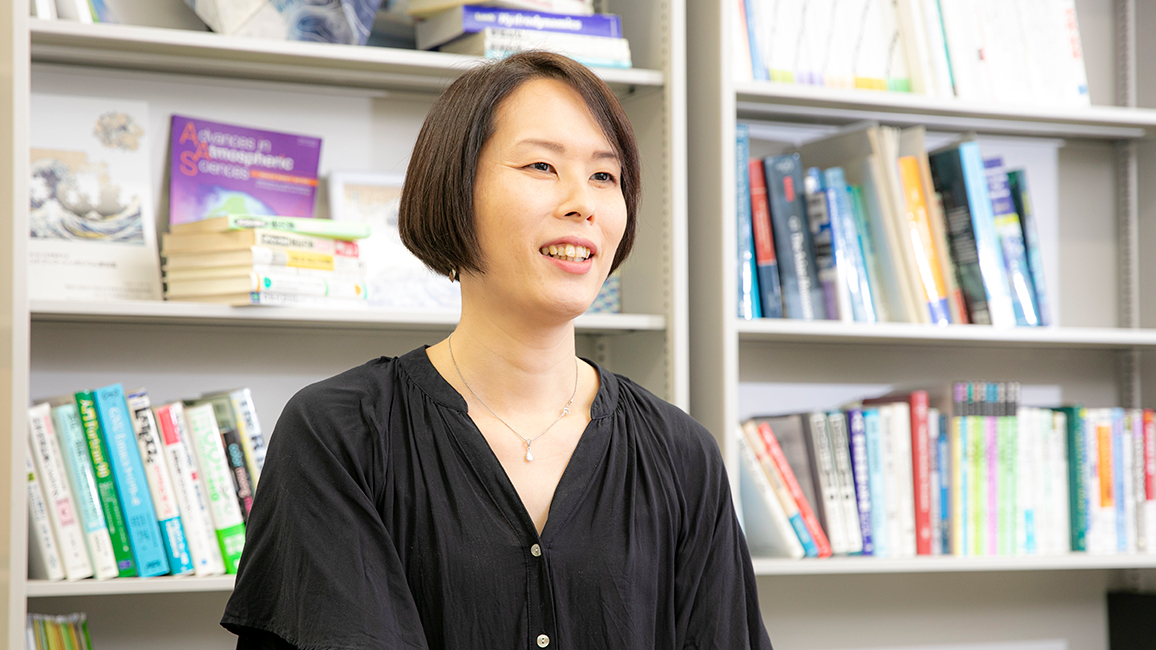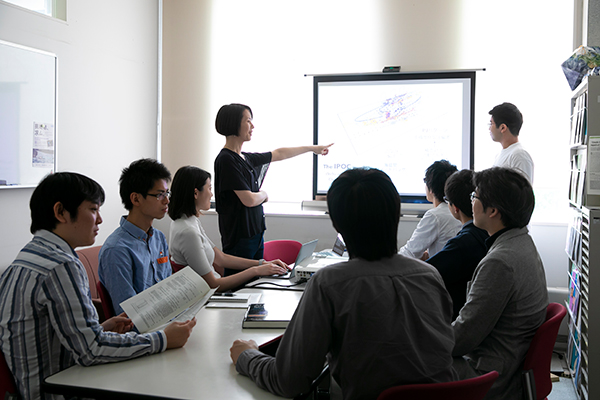- HOME
- Research at RCAST
- Visit to Laboratories
- Kosaka Laboratory
Kosaka Laboratory

What causes climate variability? Getting to the bottom of the issue
At Kosaka Laboratory, specializing in global climate dynamics, researchers are working to elucidate the mechanisms of climate variability and change using observational data from all over the world and climate models. Their research spans a broad range of themes from mechanisms of extreme weather to projecting the future of global warming. Factors that affect climate include both human-induced climate change and natural variability. Natural climate variability often occurs from teleconnections and ocean-atmosphere interactions. They analyze vast amounts of data from around the globe to get down to the bottom of the issue.
Behind the visible weather phenomena
Japan is frequently experiencing extreme weather in recent years. This, however, is not a phenomenon limited to Japan. A series of multiple incidents are occurring in different parts of the world like a chain reaction. Since changes that have occurred in a certain location affect remote regions, this phenomenon is called a “teleconnection”.
For example, the heavy rain and extreme heat that struck western Japan and Tokai area in 2018 were associated with teleconnection patterns called the Silk Road pattern and Pacific-Japan (PJ) pattern, which originated in Europe and around the Philippines, respectively. Europe too was struck by an anomalous heat wave that year.
In order to precisely understand a complicated phenomenon, we need to resolve climatic variations into separate phenomena caused by mechanisms including teleconnections and ocean-atmosphere interactions. Statistical analysis of observational data is the key to this process. Once the individual phenomena have been understood separately, we then need to reintegrate them back together. Interactions of different phenomena are reproduced using climate models to understand past extreme weather events and to form the basis for better predictions.
If we partition the atmosphere and ocean into grid cells of 100 km horizontal extent with tens of vertical layers, the climate system follows differential equations of several millionth degrees. Finer resolution leads to even higher degrees. Through statistical analyses and computer simulations, we contract this overwhelmingly huge system into lower dimensions that we can understand. Such understanding is essential to predict the course of global warming and the future of the planet as accurately as possible.
Unraveling a story from an immense mass of data
I used to love reading Newton and watched every episode of NHK Special Science series when I was in junior high. Perhaps I had already made up my mind at that young age to pursue a science career. Even recently, I found myself so excited when watching a live broadcast of a blackhole captured on film for the first time in history.
I originally aspired to become a theoretical physicist, but global warming became a highlighted issue when I was in high school. So I decided to approach the warming mechanism from a physical perspective and chose to major in earth sciences.
On advancing to the master’s program, I selected climate variability as my research topic. As I embarked on my research, I began to realize that research in this field is like unraveling a story from an immense mass of data by spinning out a thread of relevant linkages. That is, to collect massive data and throw them into a model, repeat experiments using the computer, derive a hypothesis and verify.
Whenever I pick up a new topic, I begin considering it all by myself and do analyses before reading many research papers on the topic. That’s because I don’t want to be influenced by the thoughts or speculations of other people. I want to start out from scratch and find by myself a certain direction to pursue. When I have determined which way to go, I start reading related works by other researchers. However, the recent proliferation of research papers is so fast that I find it difficult to track all of them.
Just do it before worrying too much
It seems that nowadays many researchers like to thoroughly study the backgrounds of a topic before they start their own research. That’s a prudent attitude, but based on lessons learned from my own experiences, I would advise young researchers to just do whatever they think is good before worrying too much. That kind of a bold attitude seems to lead to better results in many cases. If you find something that catches your interest, just start analyzing. As you work through your first step, the next step will show itself in the course of your research. Just follow the steps that emerge before you and you’re likely to reach a result.
At my laboratory, we work in close collaboration with overseas researchers. We often have foreign researchers visiting us on joint research projects and members of our lab also frequently make presentations at overseas academic conferences. There will be many opportunities for you to engage in overseas activities, so don’t just sit and wait, go and seize the chance.
Members of my lab are all interested in not only global warming but also climate variability including extreme weather. Whatever topic you choose, I hope you will gain through research a strength of your own that will enable you to compete in the global arena. There will be growing needs for communicators who will convey the outcomes of latest climate research to the broader society. In the US, there are already many journalists specializing in climate science, which is an example of a promising career path for those who wish to study climate dynamics.




